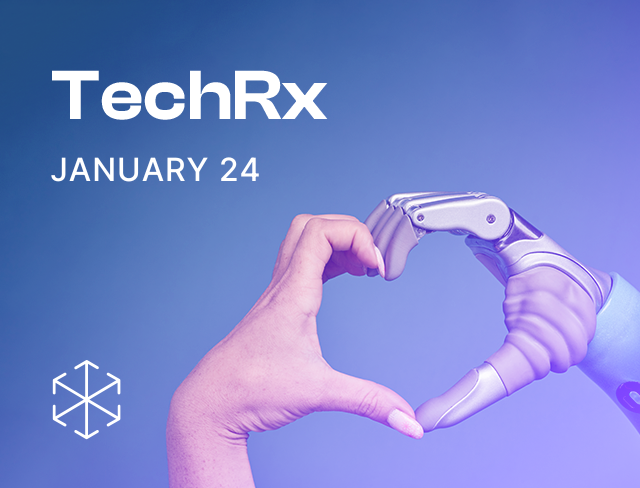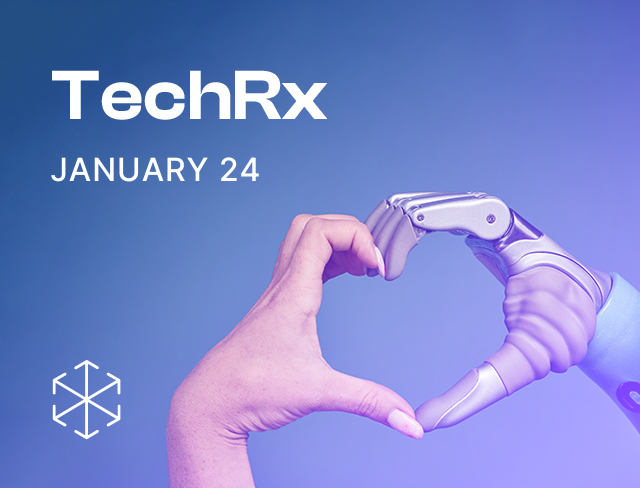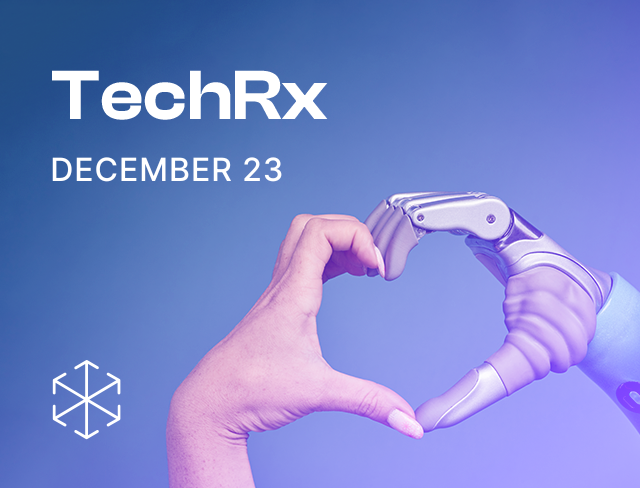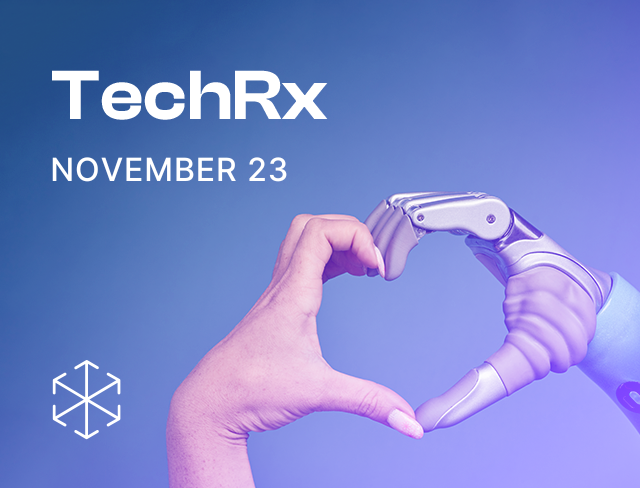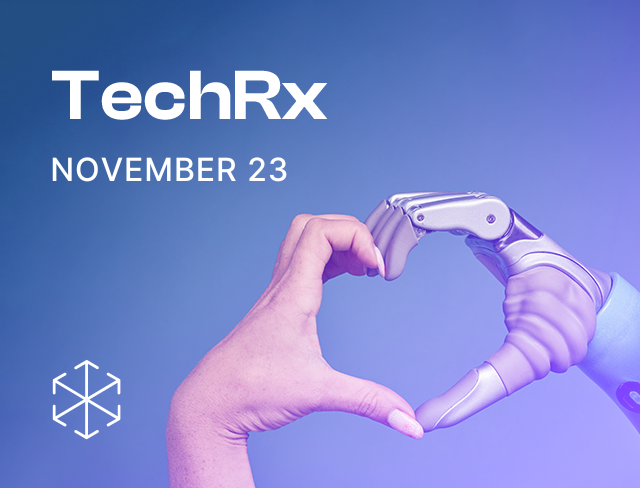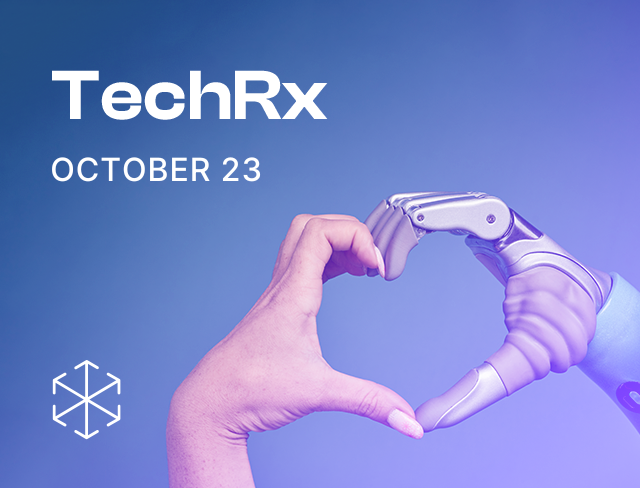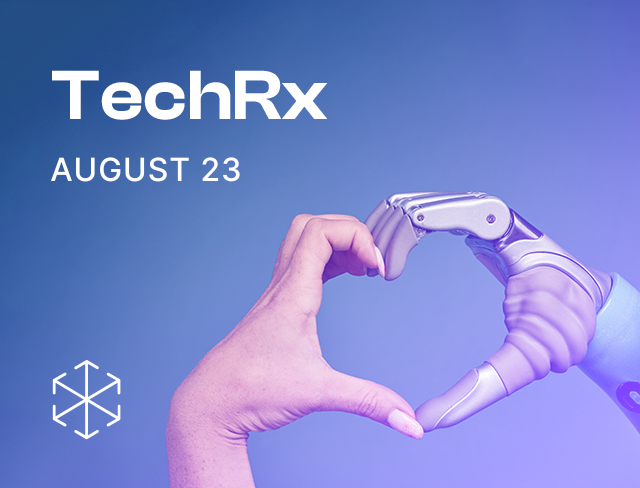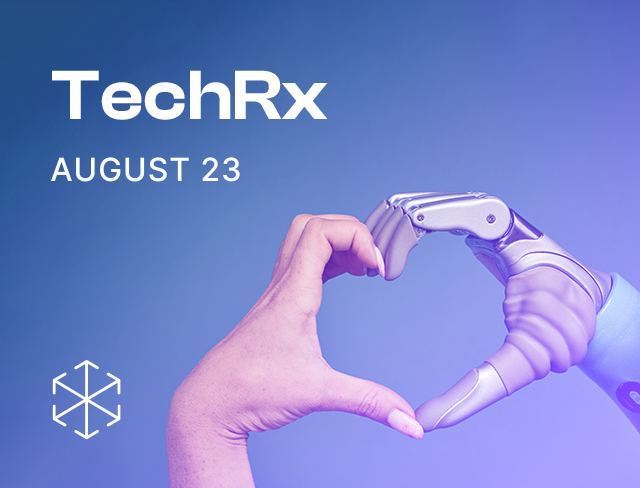Healthcare in India is plagued with problems – a severe shortage of hospitals, doctors and other health service providers; a large section of the population which is poor and does not have access to health care; and inadequate governmental spending and support[1]. Despite the fact that India is behind more developed countries in the adoption of technology, these factors are driving innovation in India, with an aim to create cost-effective, better quality and scalable healthcare technology here. Health-tech innovation is thus growing rapidly in India, and is in fact the 4th largest contributor towards start-up led tech innovation in the country[2]. In addition to start-up entrepreneurship, support from hospitals, public-private partnerships and even innovation by tech giants makes health-tech a fascinating space in India’s technological journey.
A broad look at Indian innovation
The development of health-tech in India falls largely under two categories: (a) technologies which directly help doctors in treating their patients, such as with diagnosis, anomaly detection, therapy and so on; and (b) technologies which do not help with treatment, including data management and other ancillary services. As per a Nasscom report[3], a larger focus at present is on the latter, which constitutes about 60% of health-tech start-ups in India (aggregators, personal health solutions and health information management), whereas the former constitutes about 40% (tech enabled diagnostics, tele-medicine and medical devices).
The disparity could be attributed to many factors, such as the difficulty in producing medically approved technology as opposed to consumer grade technology. Another factor could be that doctors are skeptical in relying on new age technologies beyond a point – for example, relying on artificial intelligence for treating a patient as opposed to just aiding decisions. Despite the disparity, several interesting uses of technology have emerged in both categories.
Going digital: Electronic health records and the automation of tasks
Increasingly, there is a strong focus on turning to technology for more secure, efficient and inter-operable data management. Many hospitals are moving or have moved towards electronic health records (“EHRs”), and the release of uniform standards by the Indian government has contributed towards this adoption[4]. Start-ups like DocEngage and Practo are examples of businesses who offer EHR and related services including software for appointment booking, practice management, lead generation channels, and health care risk management, among others[5]. The automation of tasks like hospital administration and revenue cycle management also contributes towards the more efficient functioning of the hospital. Cloud service support to house the large volumes of data being generated is another area of innovation.
Blockchain for data management
In the healthcare sector, the ubiquitous blockchain is being tapped into for data management, among other uses. A significant advantage it offers is in allowing demonstrable compliance with data protection laws. Though many applications of the blockchain are still in the proof-of-concept stage, some services are available. The Indian Auxledger technology, for instance, offers a blockchain-enabled service for managing EHRs[6], while Project Shivom in India has created a genomics storage and analytics platform founded on the blockchain[7]. Another example is the partnership between Call Health (an integrated healthcare platform) and ThynkBlynk (blockchain services)[8] which leverages the blockchain to tackle issues like fake or fraudulently modified documentation, repeated procedures and pathological tests, and creation and verification of paper trails (which are normally done manually) among health service providers. Another blockchain use case being explored is the use of this technology in supply chain management, such as to tackle counterfeit drugs and theft in transit.
The uses of AI in healthcare
In addition to the benefits outlined already, going digital also aids doctors directly with their work, since the records can serve as a database, clinical support tool and research & analytics engine all rolled into one. Such use cases leverage artificial intelligence (“AI”) and machine learning in particular. The Indian start-up Mfine, for instance, offers an assistive intelligence platform which assists doctors by providing a preliminary prognosis based on the data provided by the patient[9].
Broadly, innovation in relation to AI in healthcare can be classified into three types- descriptive, predictive and prescriptive AI (as per a Centre for Internet & Society report)[10]. Of these, the first is the most common, and comprises formulating analysis and insight from existing data, such as spotting trends or minor changes in health. Mfine’s platform is an example of descriptive AI at work.
The use of predictive AI, where AI is used to predict or forecast events and even suggest actions, is also increasing. The Apollo Hospital’s EMR related heart risk tool is an example. This tool uses personal data to help create a risk score prediction model and better manage cardiovascular disease care. Another use of predictive AI is the possibility of a patient committing suicide. Apart from these, AI is being increasingly used in cancer treatment. Indian startups like Inspirata[11] and Niramai[12] for instance, use machine learning and big data analytics on thermography images to help detect, diagnose and treat cancer. Another example is a chatbot app like Wysa[13], created by Bangalore based Touchkin Services, which provides empathetic and mental health support to patients. The chatbot, however, is not designed to provide diagnosis, and transfers the more serious cases to doctors[14].
The third is the most controversial use of AI is where it suggests treatments. A chatbot, Babylon Health, in use by the National Health Service in the UK, currently provides information based on symptoms and sets up telemedicine texts or calls with doctors for patients[15]. Its makers, however, report that the chatbot has successfully cleared UK’s General Practitioner exam, and in fact can go head-to-head with doctors in a simulated environment[16]. The potential of AI in this respect is interesting, particularly for resolving skewed doctor-patient ratios[17].
Increasing inclusion through tele-medicine and low-cost devices
Resolving inclusion and increasing the reach of healthcare is a place where health-technology has tremendous potential. Innovation here includes, on the one hand, technology which enables tele-medicine and remote consultation, and on the other, technology which makes medical devices cheaper, portable, accessible and more efficient. The ubiquitous smartphone and increasing internet penetration are also being tapped into for such inclusion and increasing access to healthcare.
The Arvind Eye Hospital[18] in India, for instance, combines a portable and low-cost technology for glaucoma screening (the ICare Tonometer) with a tabled based EHR system, to tackle blindness in rural areas. These are used in EHR-based camps to increase the number of patient referrals to the base hospital, and to check and ensure that the referrals are completed, i.e., that the patients receive treatment. Another example is of a pilot project via a tie up between the University of Bonn’s Eye Clinic in Germany and the Sankara Eye Center in Bangalore, India. This project involved creating an alternative camera attachment with an LED light, battery and adhesive tape, which served as a low-cost but effective smartphone-based ophthalmology device[19].
Leveraging the smartphone for access to healthcare
Hospitals are increasingly tapping into the smartphone to better access to healthcare. For example, a hospital in Hyderabad introduced smartphone-coupled devices for retinal and corneal imaging for use by staff[20]. Smartphone-based aggregators and other online services are also being used to connect doctors with patients. iCliniq India, for example, is a virtual medical help service allowing online consultation at any time[21]. Another Indian start-up, Portea[22], allows remote diagnostics and remote monitoring of patients, while also enabling the provision of healthcare at the patient’s home, such as through home visits. Other online health service aggregators include Indian start-up Lybrate[23], which provides a database of doctors; Practo[24], which additionally helps obtain medicines and store records; and MUrgency[25], which aggregates emergency services like doctors, nurses, ambulances and first-aid assistants.
Apart from smartphones, fitness devices and wearables are also becoming increasingly popular as people become more health conscious. Some well-known uses include apps and devices that track activity or sleep, such as fitness bands offered by GoQiiLife[26] and Samsung’s Gear Fit 2[27] that can track steps, keep GPS records of movements, and also helps keep track of real time heart rate readings, Additionally, devices like Apple’s smartwatch, the Apple Watch Series 4[28], also offer electrocardiographic (ECG) support, recording data and providing it in a shareable PDF format. Apple’s ResearchKit[29] was also utilized by researchers to assess smartphone data on sleep, exercise and mood of volunteers with Parkinson’s disease, to assess which factors worsened their condition.
The internet of medical things
The internet of medical things or IoMT is also being tapped into, not just as a means of self-care but by many Indian hospitals to monitor patients and keep track of vital signs, like temperature, blood oxygen saturation, blood pressure, respiration, etc.[30]. An interesting use of IoMT is in ‘smart’ ambulances, such as those offered by Karexpert in India[31], where data from IoMT devices is continuously fed into the hospital’s information system, thus enabling quicker treatment.
Virtual reality and 3D printing in healthcare
A last and interesting use is of virtual reality (“VR”) in healthcare. The therapeutic uses of VR are increasing, such as in pain therapy after cancer treatments, as offered by Indian start-up Loop Reality[32], or its use in helping patients with ADHD deal with cognitive issues or social anxiety[33]. Another innovative use of VR and 3D printing is in surgery simulations. This is being used not only by doctors to reduce the chances of failure, but also to train students. For instance, a live virtual reality training session was conducted in 2017 by Global Hospitals in Hyderabad in association with a start-up Health Connect Digital[34].
Players in this field
Along with studying the wide-range of innovation in health-tech in India, it is equally interesting to see the assortment of players involved. A number of start-ups are driving innovation, either independently or in association with other players. The start-ups themselves are of varying set-ups, some being purely indigenous, some cross-border in nature (Inspirata, for instance, is US-based and entered the Indian market only a few years ago[35]), some with their headquarters set up outside India (health tech start-up GOQii Life, for instance, is headquartered in California and has an office in Mumbai[36]), and some with support from global companies.
Tech giants like Apple and Amazon (which offers Comprehend Medical, a machine learning software to extract diagnosis, treatments, dosages, symptoms and signs from unstructured medical text[37]) are also important players. Given the potential of health technology in resolving numerous health related issues, one can also see hospital-aided innovation, public-private partnerships and governmental support. An example is the tie-up between Microsoft and the government of Telangana to use cloud-based analytics for the Rashtriya Bal Swasthya Karyakram program, to tackle avoidable blindness in children[38].
The regulatory challenge of health technology
India is witnessing rapid innovation in health technology is growing rapidly. Its potential is tremendous, as are the benefits to the people. At this juncture, the impact of the disruption created by technological innovation on traditional regulation must be noted. Much like in other sectors (say the financial sector); traditional health related laws continue to govern this space. Specific regulations are, however, required, to address the numerous grey areas that arise (say with prescriptive AI), and to prevent the laws from hampering innovation. A subsequent article will deal with the regulatory issues and challenges that arise with innovation in the health-care sector.
(This article has been authored by Asheeta Regidi with inputs from Nehaa Chaudhari. Regidi is an independent consultant in technology laws and a GDPR compliance specialist (CIPP/E/A). Chaudhari is the Public Policy Lead at Ikigai Law.)
[1] Media Report by Vijay Govindrajan: India is no place for health care innovation, but “doctorpreneurs” are making it happen, Quartz India, dated July 19th, 2018, available at https://qz.com/india/1331574/indias-doctopreneurs-are-driving-health-care-innovation/ , and
Dr. Pooja Rao: AI and healthcare technology in India: opportunities, challenges, and emerging trends, Health Management, Volume 18, Issue 3, 2018, available at https://healthmanagement.org/c/healthmanagement/issuearticle/ai-and-healthcare-technology-in-india-opportunities-challenges-and-emerging-trends
[2] As per a NASSCOM report , health tech start-ups constitute 8% of the tech start-ups ecosystem in India, standing 4th after enterprise software (16%), fintech(14%) and marketplace(12%) start-ups: Page 10, NASSCOM Report: Indian Tech Start-up Ecosystem: Approaching Escape Velocity, Edition 2018, available at https://www.nasscom.in/system/files/secure-pdf/Indian_Start-up_Ecosystem_2018-Final_Report.pdf
[3] Vertical Deep-Dive: Healthcare start-ups: Page 26, NASSCOM Report: Indian Tech Start-up Ecosystem: Approaching Escape Velocity, Edition 2018, available at https://www.nasscom.in/system/files/secure-pdf/Indian_Start-up_Ecosystem_2018-Final_Report.pdf
[4] Electronic Health Record (HER) Standards for India, 2016, Standards Set Recommendations v2.0), Ministry of Health and Family Welfare, available at https://mohfw.gov.in/sites/default/files/17739294021483341357.pdf
[5] See https://www.docengage.in/#whyus
[6] Website of Auxesis: Industries, available at https://auxesisgroup.com/industries.html
[7] Media Report by Sindhu Kashyap: Project Shivom integrates healthcare with medical genomics on the Blockchain, Your Story, dated February 15th, 2018, available at https://yourstory.com/2018/02/project-shivom-integrates-healthcare-medical-genomics-blockchain
[8] Media Report: CallHealth Partners With ThynkBlynk To Kickstart India’s First Cross Industry Immutable Data-Interchange, Powered By Blockchain, dated March 28th, 2019, available at https://www.expresshealthcare.in/news/callhealth-partners-with-thynkblynk-to-kickstart-indias-first-cross-industry-immutable-data-interchange-powered-by-blockchain/410506/
[9] Website of Mfine: Here, AI is for Assistive Intelligence, available at https://www.mfine.co/assisted-intelligence/
[10] Report by Yesha Paul, Elonnai Hickok, Amber Sinha, Udbhav Tiwari: Artificial Intelligence in the Healthcare Industry in India, The Centre for Internet & Society, January, 2018, available at https://cis-india.org/internet-governance/files/ai-and-healtchare-report
[11] See Website of Inspirata, available at https://www.inspirata.com/about/
[12] See Website of Niramai, available at https://www.niramai.com/
[13] See Website of Wysa, available at https://www.wysa.io/
[14] Page 8, Report by Yesha Paul, Elonnai Hickok, Amber Sinha, Udbhav Tiwari: Artificial Intelligence in the Healthcare Industry in India, The Centre for Internet & Society, January, 2018, available at https://cis-india.org/internet-governance/files/ai-and-healtchare-report
[15] Website of Bablyon, on Ask Babylon, available at https://www.babylonhealth.com/product/ask-babylon
[16] Media Report by Jonah Comstock: Babylon’s AI passes mockup of UK’s GP exam, goes head-to-head with doctors, Mobi Health News, dated June 27th, 2018, available at https://www.mobihealthnews.com/content/babylons-ai-passes-mockup-uks-gp-exam-goes-head-head-doctors
[17] A 2019 report by the Center for Disease Dynamics, Economics & Policy (CDDEP) in the US suggests that India has a shortage of an estimated 600,000 doctors and 2 million nurses. As per this report, there is one government doctor for every 10,189 patients. Media Report: India facing shortage of 600,000 doctors, 2 million nurses: Study, the Economic Times, dated April 14th, 2019, available at https://economictimes.indiatimes.com/industry/healthcare/biotech/healthcare/india-facing-shortage-of-600000-doctors-2-million-nurses-study/articleshow/68875822.cms?from=mdr
[18] Dr Vikram Venkateswaran: Apollo Hospitals and Aravind Eye Hospital win big at the 6th Asia Pacific HIMSS Elsevier Digital Healthcare Award 2018, dated January 7th, 2019, Healthcare India: Research and Advisory Services, available at http://healthcare-in-india.net/healthcare-technology/apollo-hospitals-and-aravind-eye-hospital-win-big-at-the-6th-asia-pacific-himss-elsevier-digital-healthcare-award-2018/
[19] Media Report by Charli Shield: Is the future of health technology already in our hands?, DW.com, dated February 14th, 2019, available at https://www.dw.com/en/is-the-future-of-health-technology-already-in-our-hands/a-47495537
[20] Ludwig, Murthy, Pappuru, Jais, Myung, Chang: A novel smartphone ophthalmic imaging adapter: User feasibility studies in Hyderabad, India, Indian Journal of Ophthalmology, dated March 2016, Indian J Ophthalmol. 2016 Mar; 64(3): 191–200.
[21] See https://www.icliniq.com/p/aboutus
[22] See https://www.portea.com/about-us/
[23] Harshith Mallya: Ratan Tata invests in MUrgency, a medical emergency response startup, dated May 18th, 2016, YourStory.com, available at https://yourstory.com/2016/05/murgency-funding-ratan-tata
[24] See https://www.practo.com/company/about
[25] Harshith Mallya: Ratan Tata invests in MUrgency, a medical emergency response start-up, dated May 18th, 2016, YourStory.com, available at https://yourstory.com/2016/05/murgency-funding-ratan-tata
[26] See website of GoQiiLife, available at https://goqii.com/in-en
[27] See Website of Samsung, available at https://www.samsung.com/global/galaxy/gear-fit2-pro/
[28] Website of Apple: Taking an ECG with the ECG app on Apple Watch Series 4, available at https://support.apple.com/en-us/HT208955
[29] See https://www.apple.com/in/researchkit/
[30] Page 18, PWC Report: Reimagining the possible in the Indian healthcare ecosystem with emerging technologies, 2018, available at https://www.pwc.in/assets/pdfs/publications/2018/reimagining-the-possible-in-the-indian-healthcare-ecosystem-with-emerging-technologies.pdf
[31] Website of Karexpert, Smart Ambulance, available at https://www.karexpert.com/dhs/smart-ambulance/
[32] Media Report by Nilesh Christopher: Indian doctors are using VR for cancer treatment & creating medical awareness, The Economic Times, dated May 9th, 2017, available at https://tech.economictimes.indiatimes.com/news/technology/indian-doctors-are-using-vr-for-cancer-treatment-creating-medical-awareness/58587000
[33] Top 8 practical use of virtual reality in healthcare to watch out for in 2018, Outsource to India, available at https://www.outsource2india.com/Healthcare/articles/practical-uses-virtual-reality-in-healthcare.asp
[34] Media Report by Nilesh Christopher: Indian doctors are using VR for cancer treatment & creating medical awareness, The Economic Times, dated May 9th, 2017, available at https://tech.economictimes.indiatimes.com/news/technology/indian-doctors-are-using-vr-for-cancer-treatment-creating-medical-awareness/58587000
[35] Media Report by Rahul Koul Koul: Inspirata enters Indian market, Biospectrum India, dated June 5th, 2015, available at https://www.biospectrumindia.com/news/75/5515/inspirata-enters-indian-market.html
[36] Website of GOQii, available at https://goqii.com/us-en/about
[37] Website of Amazon Web Services: Amazon Comprehend Medical, available at https://aws.amazon.com/comprehend/medical/
[38] Report by Yesha Paul, Elonnai Hickok, Amber Sinha, Udbhav Tiwari: Artificial Intelligence in the Healthcare Industry in India, The Centre for Internet & Society, January, 2018, available at https://cis-india.org/internet-governance/files/ai-and-healtchare-report

